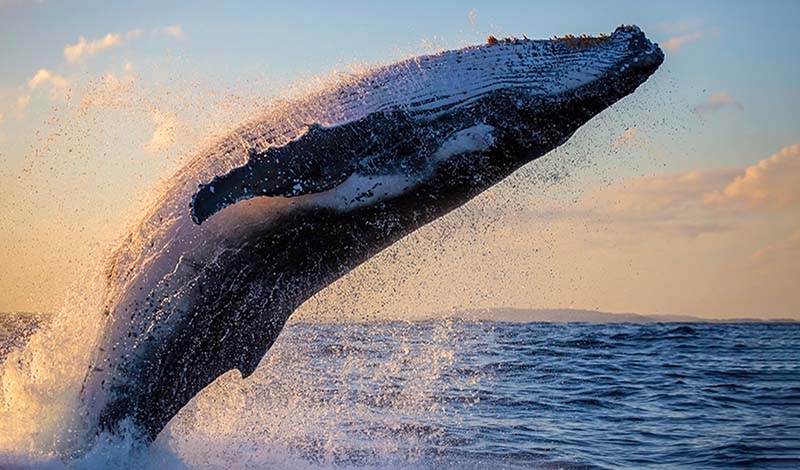2-minute read
Have you ever wondered what baleen whales get up to in their spare time? Do they even have spare time? Sure, whales work from home, make their own schedules, and come and go as they please, but nature can be a harsh taskmaster, and the business of surviving in the wild is a 24/7 endeavor. To fulfill basic physiological needs, the giant marine mammals spend most of their waking hours migrating, foraging for food, caring for young, and, more recently, ship dodging. But according to a new study, humpback whales also make room for fun—engaging in seaweed-centric play known as kelping.
Water Toys and Spa Treatments
Thanks to video and photo contributions from keen-eyed citizen scientists and whale watchers in the U.S., Australia, Canada, and French Polynesia, researchers from Griffin University have reported that humpbacks intentionally seek out and interact with kelp beds and floating seaweed. They swim through it, drag it, and roll in it. They throw it in the air and rub it on their pectoral fins. They kelp alone, and they kelp with other whales.
And what is the purpose of kelping? The whales aren’t talking, but marine scientists have proposed several possibilities: it’s fun—the playful interaction stimulates the giant mammals’ senses and enhances their motor abilities; it’s soothing—they enjoy the sensation of seaweed on their head and jaws; it’s medicinal—they use it to remove parasites and dead skin; it’s a communications tool—they use it to signal other whales.
Humpbacks aren’t the only marine animals known to use random floating objects to engage in what could be interpreted as fun-seeking behavior. Innovative object-oriented activity has been documented in a variety of species, including otters, dolphins, orcas, grey whales, and walruses. Some biologists believe that participating in behaviors outside of the essential tasks of daily living may help animals acquire knowledge, adapt to a changing environment, or build life-sustaining relationships.
Continuing to study how various whale species spend their time in the wild can contribute to conservation efforts by increasing our understanding of how to maintain the ecosystems they depend upon for survival. We may come to learn exactly how important a bit of clean, green, exfoliating whale fun is to their existence.

ICYMI Nature News
This She-Bear Chomps Salmon Like a Boss
Well, it’s official. The really big winner of Katmai National Park’s annual Fat Bear Week contest is the formidable female feaster, Grazer. She out-chomped our pick, second runner-up, Chunk, by a salmon-scarfing mile to be crowned Queen of Katmai. And long may she reign.
Humans Make the Scariest Sounds of All
Apparently, human voices are more frightening to South African wildlife than the roar of lions. Now, researchers are conjuring ways to use recordings of human chitter-chatter to deter animals from entering high poaching areas. So, we’re a good kind of scary, then. Sort of.
Kangaroo Moms Form Clubs to Deter Predators
According to a new study in Animal Behavior, kangaroo moms form neighborhood watch networks to keep their joeys safe from foxes and dingoes. Don’t mess with the socially savvy sisterhood of marsupials.
Even More Glow-In-the-Dark Mammals
It seems a whole lot more mammals have fluorescent fur than previously believed. New research found that 107 of 125 species evaluated had fur that glowed under UV light, including bats, zebras, and polar bears. Solar-powered, we presume?
As If You Need an Expert to Tell You, Cats Are Perfect
A biologist from the Natural History Museum in London has determined that felines have achieved evolutionary perfection. Here’s why. Also, a few thoughts on the matter from FWP resident catnip curator Stella: “Who am I to argue with the scientific community? Now, how about a treat?”
And How Does Your Hammer Grow?
If you’ve ever wondered how a hammerhead shark develops its tool-shaped snout, for the first time ever, you can watch it grow.
Comedy Wildlife Photography Awards
Dancing bears, scolding birds, or lazy lions? You have until November 23rd to cast a vote for your favorite Comedy Wildlife Photograph for 2023. Check out the 41 funniest finalists here.






























































